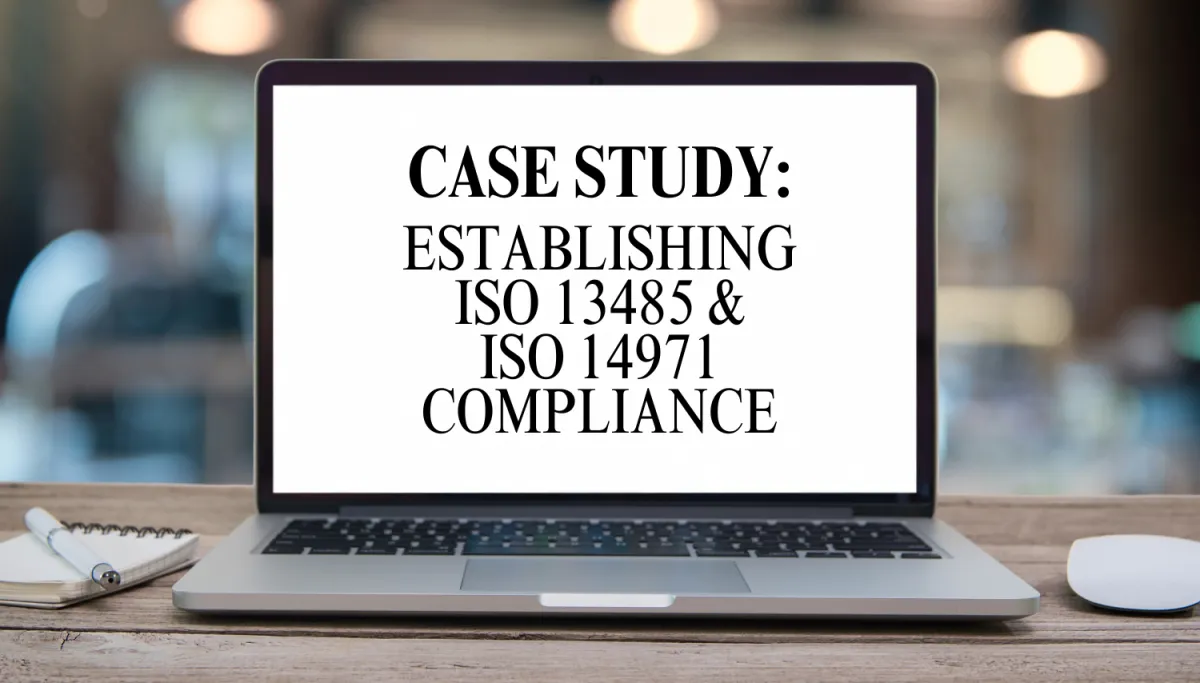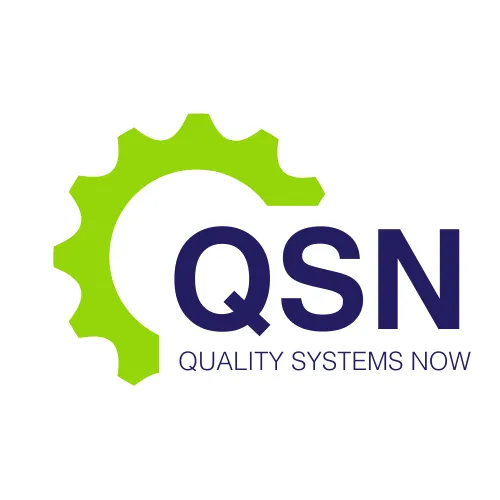LATEST NEWS

Case Study: Establishing ISO 13485 and ISO 14971 Compliance
Introduction
The medical device industry requires rigorous standards for quality management and risk management to ensure patient safety and regulatory compliance. ISO 13485 provides the framework for a robust quality management system (QMS), while ISO 14971 focuses on the application of risk management throughout the product lifecycle. For manufacturers transitioning into medical device production, aligning operations with these standards, as well as meeting local regulations such as those specific to Australia and New Zealand (ANZ standards), is critical. This case study examines how Quality Systems Now (QSN) supported a manufacturer during the COVID-19 pandemic in establishing a compliant facility, QMS, and personnel readiness for ISO 13485 inspection by a notified body.
Project Background
During the COVID-19 pandemic, a manufacturer sought to diversify into medical device production. This transition required comprehensive support to implement regulatory compliance, risk management, and quality systems that meet ISO 13485, ISO 14971, and applicable ANZ standards. The manufacturer needed guidance across multiple facets, including product development, facility design, personnel training, quality assurance (QA), and regulatory affairs. The objective was to establish a compliant medical device manufacturing operation capable of successfully passing inspection by a notified body.
QSN’s approach focused on both foundational and operational deliverables, ensuring that the client’s facility, products, systems, and personnel met international standards and local regulatory requirements.
Key Deliverables
QSN’s engagement with the manufacturer involved multiple deliverables to ensure ISO 13485 and ISO 14971 compliance:
Quality Management System (QMS) Development
QSN developed a customized QMS that aligned with the manufacturer’s specific processes, products, and operational systems. The QMS included approximately 200 documents covering procedures, work instructions, templates, and forms. The comprehensive system provided structure for process control, documentation, traceability, and compliance monitoring, serving as the backbone for all regulatory and quality activities.
Material Specifications and Testing
A critical aspect of medical device compliance is the control of materials. QSN established starting material specifications and a robust testing process, ensuring that all incoming materials met quality standards before use in production. Support was provided for external testing of materials, verifying compliance with both ISO 13485 and regulatory expectations. This process mitigated risks associated with material variability and helped maintain consistent product quality.
Inwards Goods Receipt Process
To ensure traceability and quality control, QSN implemented a compliant inwards goods receipt process. This manual system inspected, labelled, and tracked materials in the warehouse, providing a clear chain of custody from receipt to production. By standardising these activities, the manufacturer reduced the risk of nonconforming materials entering production and ensured regulatory requirements for material management were met.
Facility and Production Support
The transition to medical device manufacturing required operational and personnel readiness in production areas, particularly cleanrooms. QSN supported the QA Manager and Production Manager in developing compliant manufacturing activities, including:
Designing appropriate personnel and material flows within the production area
Reviewing cleanroom layouts and qualification requirements
Implementing gowning and cleaning procedures consistent with ISO 14644 and ISO 13485 requirements
These measures ensured that both the facility and staff met regulatory expectations for sterile and controlled environments, reducing the risk of contamination and enhancing product safety.
Release for Supply and Final Inspection
QSN introduced a structured process for release for supply and final inspection, which was new to the company. This process included procedures for verifying that all production and QA requirements were met before products were released, ensuring compliance with ISO 13485 requirements for product release and traceability.
Validation and Technical Documentation
To support regulatory submissions and product approvals, QSN reviewed validation protocols drafted by subject matter experts (SMEs) and provided guidance to align them with ISO 13485 and ISO 14971 requirements. In addition, QSN drafted study reports to support the technical file and collated or created documentation for the Summary Technical Documentation (STED) in collaboration with the client’s Regulatory Affairs team. This documentation demonstrated that products were developed, manufactured, and tested according to regulatory and quality standards.
Personnel Training
Staff competence is fundamental to regulatory compliance. QSN provided targeted training for QA and production personnel, focusing on cleanroom gowning and cleaning requirements. In addition, the manufacturer received training on ISO 13485 principles, enabling key personnel to understand quality system expectations and their roles in maintaining compliance. Training ensured the company was audit-ready and that personnel could consistently apply regulatory and quality practices in their daily operations.
Audit Readiness and Notified Body Support
QSN conducted audit readiness activities to prepare the manufacturer for inspections. This included mock audits, documentation review, and identification of gaps in compliance. During the actual inspections, QSN provided support, assisting the company in responding to auditor queries and demonstrating adherence to ISO 13485, ISO 14971, and ANZ-specific standards. This hands-on support was pivotal in successfully navigating two notified body inspections without major nonconformities.
Outcomes and Benefits
The manufacturer successfully transitioned into medical device production with a fully implemented and compliant QMS, trained personnel, and validated processes. Key outcomes included:
A comprehensive QMS tailored to the company’s operations
Robust material management and testing processes
Compliance-ready production and cleanroom practices
Documented validation and technical files supporting regulatory submissions
Trained personnel capable of maintaining ISO 13485 compliance
Successful completion of two notified body inspections
The engagement demonstrated that structured support from experienced regulatory and quality specialists can significantly reduce the complexity and risk associated with entering the medical device sector.
Conclusion
This case study highlights the critical role of ISO 13485, ISO 14971, and local ANZ standards in guiding manufacturers transitioning into medical device production. By partnering with Quality Systems Now, the manufacturer achieved a compliant facility, effective quality management, trained personnel, and regulatory readiness. The project underscores the importance of a systematic approach to quality and risk management, ensuring product safety, regulatory compliance, and operational efficiency.
For therapeutic goods manufacturers, biotechnology companies, and testing laboratories seeking to enter or expand within the medical device market, this example illustrates the practical application of international and regional standards to achieve compliance, mitigate risk, and establish a foundation for sustainable operations.
